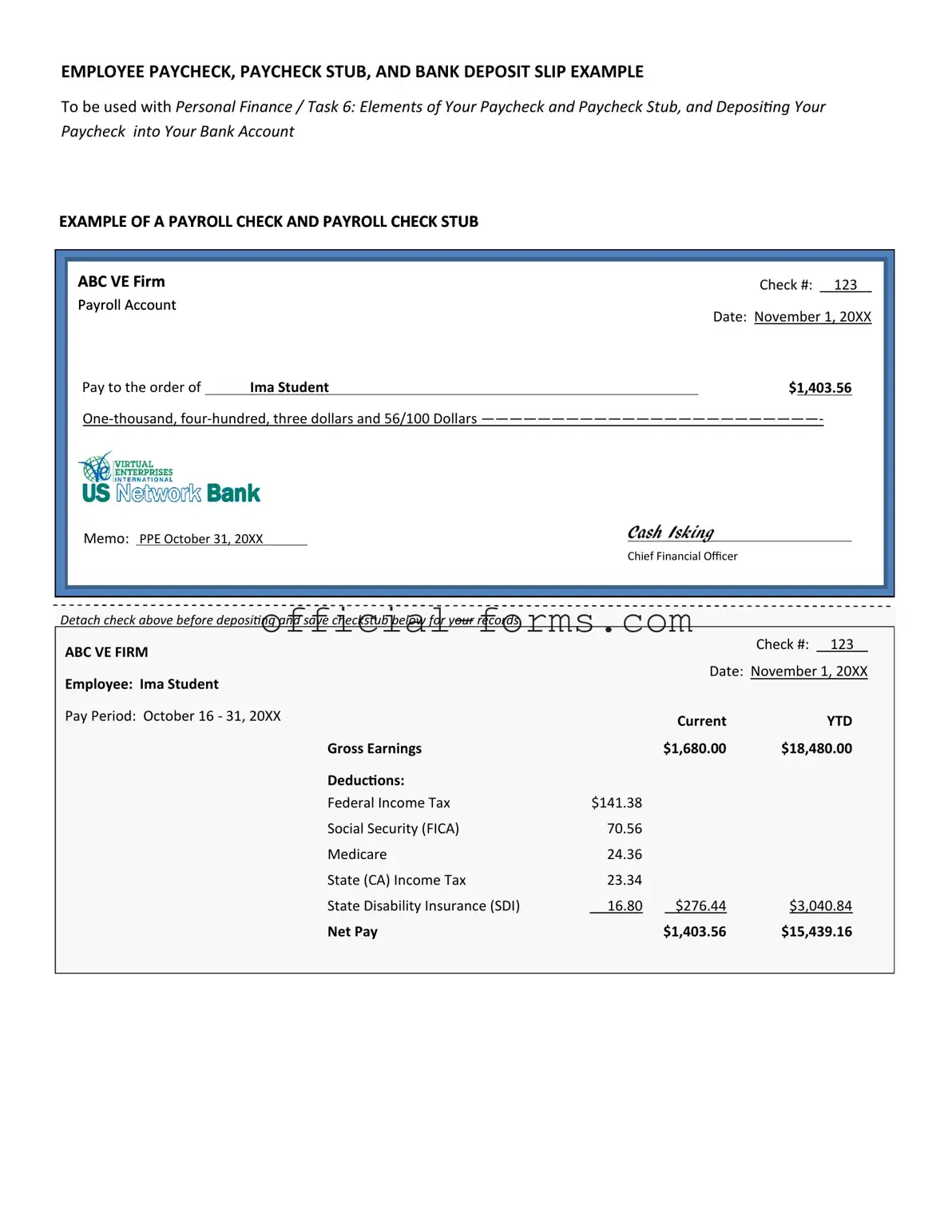The Payroll Check form plays a crucial role in the compensation process for employees, serving as a detailed record of wages earned for a specific pay period. This form typically includes essential information such as the employee's name, identification number, and the total amount of money being disbursed. Additionally, it outlines deductions for taxes, health insurance, retirement contributions, and other withholdings, ensuring transparency in how the final payment is calculated. The form may also specify the pay period dates, the employer's information, and any bonuses or overtime pay included in the total. Understanding the components of the Payroll Check form is vital for both employers and employees, as it not only facilitates accurate payments but also helps in maintaining compliance with labor laws and regulations. Furthermore, this form serves as an important document for record-keeping and financial planning for employees, making it essential to handle with care and accuracy.
